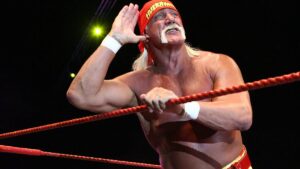North America is opening its doors to lithium refinement. These ASX juniors are stepping in to help

The West is starting to provide incentives and subsidies to create regional downstream lithium supply chains for EVs and batteries.
- North America is primed to open its lithium refining account and ASX juniors are jumping in to fill the gaps
- US and Canadian governments are providing incentives, yet more support needs to be done to get projects off the ground
- Fastmarkets is proposing regional North American pricing for lithium for producers to maximise revenue
- ASX juniors are looking to fill the ‘missing midstream’ of lithium refinement in the region
China and the West have had a long, fruitful lithium relationship over the years. That’s changing. Some relationships are forever, however some just grow apart.
It’s how each party picks up the pieces towards a brighter future that matters, and this break up could be a significant makeup for ASX juniors adopting their business into North America’s lithium supply chain goals.
China has been pumping out the full suite of lithium battery-related products since the mid-1990s, vastly undercutting the cost for countries to build their own domestic supply chains.
That’s because Chinese labour costs were (and still are) consistently low, yet it was the CCCP’s industrial policies that inherently played an integral role in shaping the Middle Kingdom’s – and the world’s – EV and battery supply-chain landscape.
Lessons from the past
In the decade to the end of 2017, the Chinese government invested ~US$60 billion to aid in the creation of national supply and demand across the whole EV supply chain.
In addition to policies that encouraged consumers and businesses to adopt EVs (which the West is only just waking up to), in 2015 the Chinese government provided substantial subsidies to automakers that use batteries made by domestic companies.
This provided considerable advantages to companies such as CATL and BYD – two of the world’s largest battery and automakers, both of which have stakes in the full “paddock to plate” lithium supply chain.
Winds of change
Demand for EVs and batteries is skyrocketing as the world transitions to lowering carbon emissions; and the global lithium market is now stretching its legs and looking to diversify away from China’s decades-long stranglehold on the market.
China still currently controls about 90-95% of lithium conversion – a few per cent short of a monopoly – and has long priced out of the market the economic viability of refinement capabilities elsewhere.
If the rest of us want to create regional supply chains, governments – as China’s did – will have to ante-up funding to subsidise the production, processing and refinement of lithium and other critical minerals.

And it’s North America that’s leading the charge
Lithium-rich districts across the globe are currently at the grass-roots level to make this happen – and they better be quick, because global manufacturers (OEMs) such as carmakers and battery producers are now spending billions of dollars to set up shop in North America.
READ MORE: Canada’s sweet on Lady Lithium and Aussie explorers are sharing the love
To support these OEMs, lithium miners are looking to add production, processing and refinement capabilities to feed into North America’s supply chains.
It’s been in the mix for a while, so let’s look at the why, the where and the who that are in support of the de-coupling of battery metal supply chains from the Middle Kingdom.
The need for regional pricing
Recently, alarm bells went off in the West as chemical prices tanked in China last year, falling from over US$80,000/t to ~US$13,000/t.
The spodumene concentrate produced by Aussie miners took a dive as well, with benchmark prices sliding from over US$8000/t to as low as US$850/t in January this year.
Because of China’s dominance, these price fluctuations affect the whole world’s lithium supply chain.
Adopting regional pricing though can help ensure that lithium prices are competitive and reflect local economic conditions, which can benefit both producers, consumers and the supply chain mechanisms in between.
Through setting different prices based on regional demand and cost structures, producers are able to maximise revenue. This means high-demand regions can bear higher prices, boosting profitability.
It incentivises downstream processing, refining and manufacturing in regions – something the US is actively pursuing.
The fastest of markets
Commodity price negotiator Fastmarkets is putting forth proposed changes to how it gauges its lithium pricing to the market to cater for regional supply chains.
Fastmarkets was the first price reporting agency to launch spot battery-grade and technical-grade lithium hydroxide and carbonate price assessments for the US and Europe, starting back in 2017.
- Lithium hydroxide monohydrate LiOH.H2O 56.5% LiOH min, battery grade, spot price, cif China, Japan & Korea
- Lithium carbonate 99.5% Li2CO3 min, battery grade, spot prices, cif China, Japan & Korea
These are currently the underlying settlement mechanisms of cash-settled contracts available from CME Group, the London Metal Exchange and the Singapore Exchange – lithium’s most active trading hubs.
“The battery raw materials market has evolved significantly since 2017, with supply and demand factors playing out markedly differently in North America, Europe and Asia,” Fastmarkets Yolande Peters writes.
“Previously, Fastmarkets provided price assessments for the US and Europe combined. These prices are now being amended to price the US and Canada jointly, and Europe separately.
“Pricing the US and Canadian lithium markets separately to Europe is essential to capture distinct regional dynamics following the implementation of the US Inflation Reduction Act.”
Inflation Reduction Act
The US recently signed in its Inflation Reduction Act (IRA), prohibiting using critical minerals and battery components from a “foreign entity of concern”, which includes companies based in China, Russia, North Korea and Iran.
This could give nations such as Chile and Argentina in the near term – and, potentially, the European Union, Japan, South Korea and Australia in the medium term – more opportunity to sell lithium products into the US.
Yet it’s US and Canadian-based resources companies that are in the box seat to supply North America – the world’s largest market. Let’s see who’s kicking about:
Filling North America’s ‘missing midstream’
US lithium major Albemarle’s energy storage president Eric Norris said that “several years ago, we were often being asked whether we would supply more lithium into the US, but at the time, there was little economic rationale to build a lithium refinery here when all the demand was in Asia”.
“What the IRA created was an incentive to build a supply chain here [in the US], generating local demand for lithium and derisking that problem.”
The juniors agree too.
Speaking with Stockhead, Lithium Universe (ASX:LU7) CEO Alex Hanly reckons that counter to what many in the industry believe, operational expenses in Canada for the production and refinement of lithium is actually on par with China – it’s the initial capital spend that hurts the most.
“Labour and construction costs are about three to four times less in China, and governments need to understand that subsidising project development is the only way to get these regional supply chains online.”
The benefits of North America compared to other jurisdictions from an operational standpoint – particularly in Canada, Hanly says, is the access to hydroelectricity, which tends to be about 3c/kWh – roughly 10 times less than power costs for similar mining projects in the US or Australia.
“Takeaways from recent discussions we’ve witnessed in Washington DC with the US Department of Energy and Department of Defence is that they’re looking for supplies away from ‘foreign entities of concern’.
“There’s a strong push for supply chain security from business too and what they call the ‘missing midstream’ – referring to North America’s refinement capabilities.
“Governments are now understanding that the only way to compete with China is for these supply chains to be subsidised – especially through the capex period.”
Hanly’s LU7 is eyeing the development of its Québec Lithium Processing Hub (QLPH) at Bécancour, which will operate an independent 1Mtpa concentrator and a 16,000tpa battery-grade lithium carbonate refinery.
Its plan is to capture feedstock from the nearby burgeoning James Bay lithium district, endowed with >500Mt of economic lithium resources to date.
Green Technology Metals (ASX:GT1) exec director Cam Henry told Stockhead that Canada’s Ontario province is also emerging as a global leader in the critical minerals sector.
“With abundant lithium resources, supportive government policies, and a complete end-to-end supply chain, the province offers unparalleled advantages for establishing chemical and conversion businesses,” Henry says.
“In the last few years, $43 billion worth of investment has been committed to Ontario’s battery supply chain alone.
“Significant incentives have been announced including the US Inflation Reduction Act, alongside comprehensive critical minerals strategies from both the Canadian and Ontario governments have attracted some of the world’s leading chemical, battery and EV manufacturers to set up shop.
“This unique opportunity offered in Canada cannot be found elsewhere in the world and the global market is beginning to pay attention to the distinctive opportunities in the region.”
Via a staged strategy, GT1 is looking to become Ontario’s first vertically integrated battery-grade lithium producer from its Root and Seymour deposits.

Other ASX explorers in Canada include James Bay Minerals (ASX:JBY) , which owns one of the largest tenement portfolios in the James Bay Minerals lithium district.
Its tenure runs into the same corridor as Patriot Battery Metals (ASX:PMT) 109.2Mt Corvette and Winsome Resources (ASX:WR1) Cancet lithium projects and the company is now on the move towards hundreds of mapped lithium targets at its greater La Grande project.
Recharge Metals (ASX:REC) Wapistan project is also nearby, where recent sampling has confirmed the presence of highly-fractionated LCT pegmatites with the potential to host lithium mineralisation at the Wapistan West prospect.
Over to the US and Arizona Lithium (ASX:AZL) downstream idea is the construction of a direct lithium extraction (DLE) plant to compliment its Prairie and Big Sandy brine projects and produce LCE concentrate for companies in the region.
AZL already has a pilot plant up at Prairie in Saskatchewan, Canada, testing LCE production from the project’s 6.3Mt resource and has just started drilling Pad #1 on its road to commercial production.
Over to the US and within the geological Smackover Formation in Arkansas, Pantera Minerals (ASX:PFE) has staked a large number of claims across 18,750 acres inclusive of its flagship Superbird brine project – where resources majors ExxonMobil, Albemarle and Standard Lithium are all setting up shop using DLE techniques.
PFE has already defined an exploration target of between 436,000-2.96Mt of contained LCE within its Superbird project area and has identified multiple re-entry wells within its footprint.
Not too far away, Future Battery Minerals (ASX:FBM) has just released a maiden resource of 6.2Mt LCE at the Lone Mountain deposit within its Nevada lithium project, in less than 12 months since drilling into the first discovery hole.
Lone Mountain shares the same mineralisation as Ioneer (ASX:INR) Rhyolite Ridge and American Lithium Corporation’s (TSX-V:LI) TLC projects.
At Stockhead we tell it like it is. While Future Battery Minerals, Pantera Minerals, Arizona Lithium, James Bay Minerals, Recharge Metals, Green Technology Metals and Lithium Universe are Stockhead advertisers, they did not sponsor this article.
Related Topics

UNLOCK INSIGHTS
Discover the untold stories of emerging ASX stocks.
Daily news and expert analysis, it's free to subscribe.
By proceeding, you confirm you understand that we handle personal information in accordance with our Privacy Policy.








